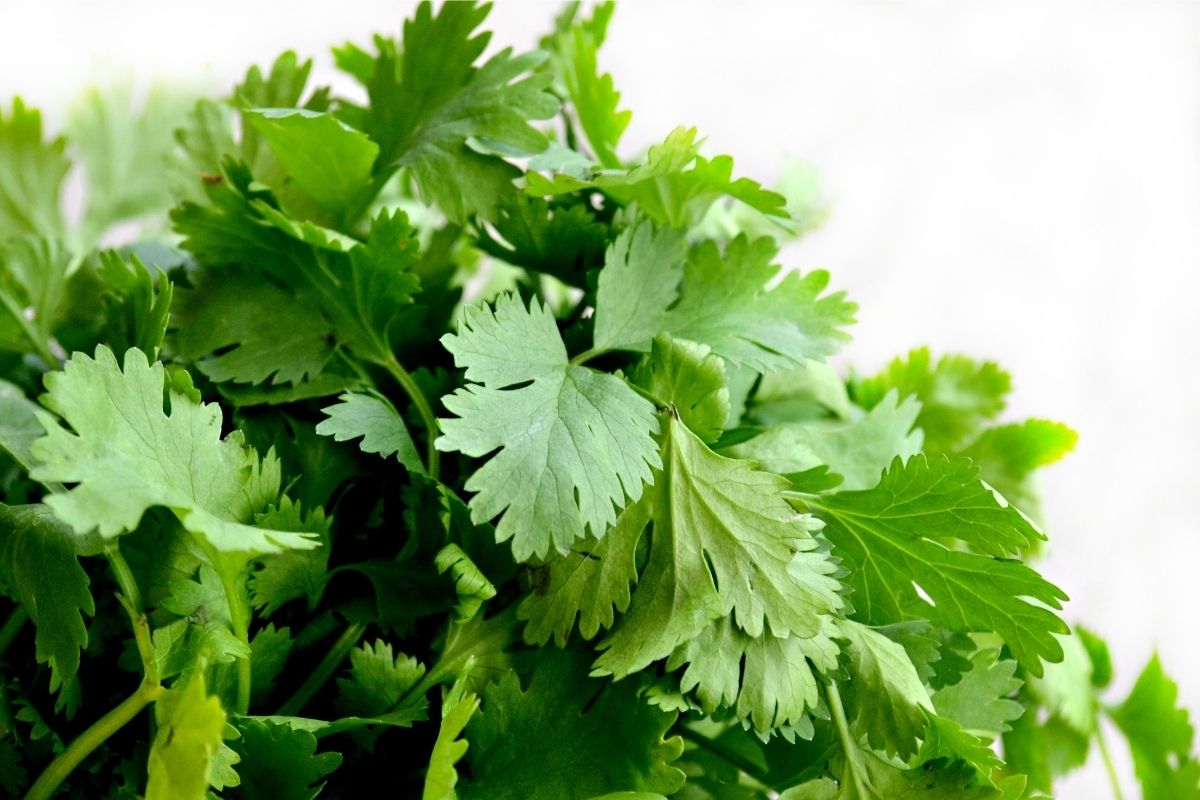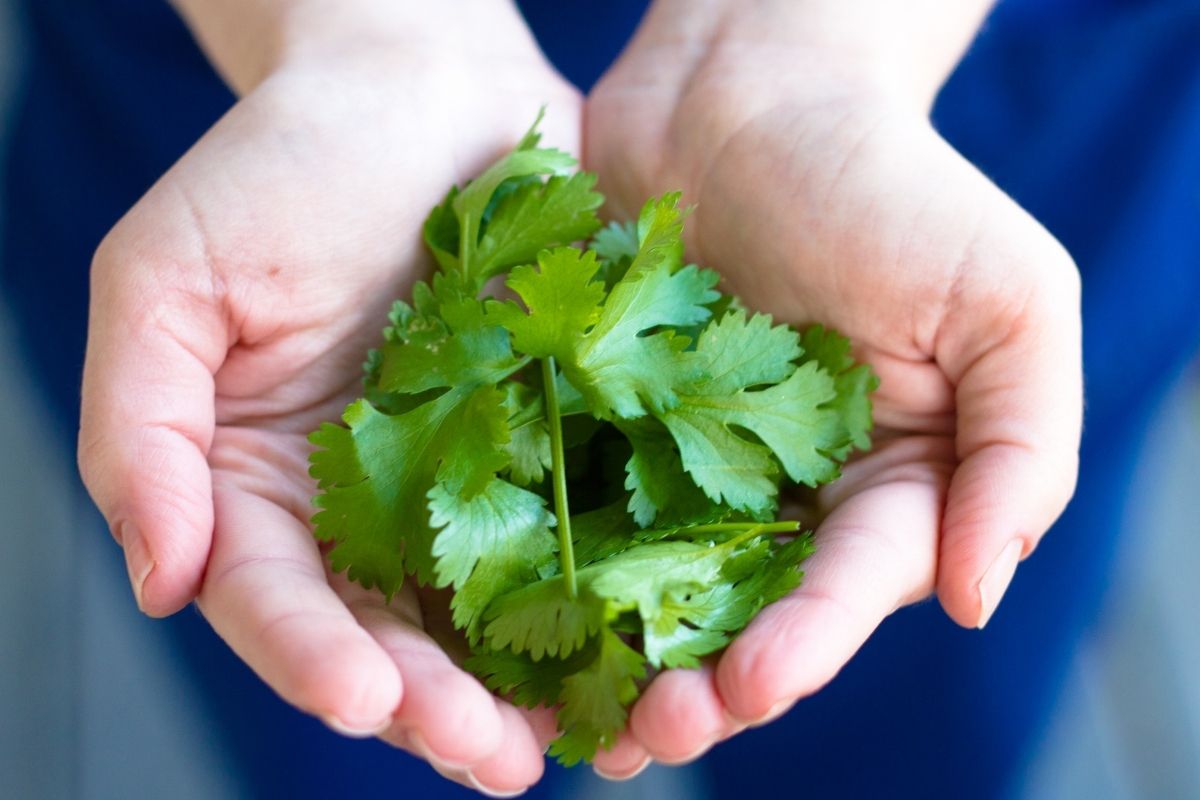Greeting to our fellow gardeners. If you are here you must be eager to learn more about cilantro and how to prune this amazing and delicious herb.
Luckily for you, we have written this article to help you learn everything you need to know about pruning and caring for cilantro.
So, without further ado, let us get started.

When Should You Prune Cilantro?
Your cilantro can be pruned about once a week if you are careful with how much you take off at a time. When the plant is about three inches tall.
Just be careful not to take too much or your cilantro will not reach full maturity and be stunted in its growth.
So, when the plant is fully grown, you can start pruning cilantro in earnest. This plant is normally grown in the spring when many other annual herbs are planted.
What Do you Need?
Before we get into how to prune cilantro we need to explore what exactly you will need and why. Below we have listed the main tools you will need in order to prune cilantro.
- Gardening Secateurs or Scissors – You will of course need a pair of sharp scissors or gardening secateurs. When you use them, make sure that they are sterilized. Use the rubbing alcohol on the scissors before you prune to sterilize your cutting implement.
- Rubbing Alcohol – Rubbing alcohol will be required to clean your scissors or secateurs so that the blade is sterile and makes it more certain that no bacteria gets into the plant.
- Paper Bag – You will only need a paper bag if you are intending to harvest the cilantro seeds at the end of the plant’s life.
Stages of Pruning Cilantro
There are different stages to pruning your cilantro, what you do will depend on what stage the plant is at in its life cycle.
Below we talk about several of the stages you can expect to see in your cilantro plant’s life and how you can prune it in those times.
So, let’s take a look?
A Light Pruning
Before you really start pruning your cilantro for growth you should prune your plant lightly. Take off any leaves that are dead, discolored, or have been damaged by pests.
You can trim the afflicted leaves or cut the stalk off and leave six inches of stem. But do not go too far, taking too many stems off the plant will stun your cilantro plant and cause it to become less productive.
In fact, if you prune your cilantro too much you can cause it to develop flowers earlier than it should, and this, in turn, will cut the plants’ life short.
So, make sure to just prune lightly, take off the damaged leaves, and only take a stem off if you absolutely have to.
Prune Clumps
Once you have gotten rid of the damaged leaves you can start pruning clumps off the plant. You can do this by taking hold of the plant at the base and pruning all the stems at once, make sure to leave at least two inches of stem when you cut.
If you want to prune like this you will need to make sure that your cilantro plant will have optimal growing conditions so that new stems and leaves develop.
Snip the Flowers Off
Your cilantro plant will inevitably reach the end of its life eventually. You will know that your plant is starting to get to that point when white or pink flowers start to develop on the plant.
At the point that these flowers appear your cilantro will grow taller and more slender, the leaves will become more sparse and not long after that the plant will die and seeds will start to develop on the plant.
If you want your cilantro to live longer you can cut the flowers off the plant as soon as they are visible. Another thing you could do is cut off the buds when they start to develop.
It is recommended that you cut the cilantro stem at the bottom of the plant because at this point the leftover stems and leaves are quite bitter and not very tasty.
Pruning the Cilantro Seeds
Of course, if you actually want to harvest cilantro seeds you can leave the flowers on the plant and reduce the number of leaves you harvest.
After about three months after you have planted your cilantro, there should be seeds ready to harvest. At this point, the plant will start to turn brown and there will be little yellowish seed cases on the plant.
All you have to do is cut those seed cases off the plant and then hand the cases up over a paper bag.
After a while your cilantro seed cases should start to drop their seeds in the paper sack and there you go, you now have a bunch of cilantro seed you can use next growing season.
Caring for Cilantro

It is important to understand how to care for cilantro. We realize how critical it is that your cilantro successfully grows.
After the blood sweat and tears, you put into caring for them. because of this, we have listed a few of the basics you will need to know in order to successfully grow your cilantro and make it thrive.
Watering
Cilantro likes moist soil, because of this, it is critical to check the soil every day or two to make sure that the conditions are optimal for this plant.
Soil
Cilantro prefers soil that is light and well-drained. Ideally, a fertile loam or a sandy soil will be best but as long as the correct nutrients are present there should be little issue with these plants.
Fertilizer
This plant has a preference for soil that is mildly acidic. It is recommended to fertilize cilantro every other week in order to get the best results.
Sunlight
Cilantro requires full sun to thrive. So when you put your pot somewhere or plant your cilantro in your garden make sure that it gets full sun.
What to Do With Cilantro Clippings?
Throughout your cilantro plant’s life, you will be taking a lot of clippings from your plant. Letting the leaves go to waste would be a terrible shame and for that reason, it is essential that you find something to do with them.
Below are several ways you can use fresh cilantro. Enjoy!
You Can Add it to Sour Cream
If you want to add a little pep to your sour cream you should think about adding some chopped cilantro. This is a fantastic way to spice up sour cream to even yogurt that you want to put on your chili, soup, or curry.
You Can Add it to Coleslaw
Coleslaw is delightful all on its own but with the added refreshing taste of cilantro added you will have the perfect dish.
You Can Add it to Oils
If you would like to spice up your oil you can infuse them with cilantro. All you need to do is add some cilantro leaves to your favorite olive oil and leave it to infuse.
You Can Add it to Pasta Salad
If you would like to add a unique twist to your pasta salad, you should think about adding a few sprigs of cilantro. It adds that extra flavor that will certainly have you coming back for more.
Add it to Rice Dishes
If you are a fan of rice dishes, you might already know that cilantro makes an excellent topping that just adds that extra something to the dish.
Frequently Asked Questions
In this section, we are going to answer a few of the most frequently asked questions concerning cilantro plants.
Do You need to Prune Your Cilantro Plant?
Your cilantro plant does not necessarily need to be pruned, but if you remove the flowers you can prolong the life of this annual herb.
If your cilantro plant is growing in a pot and has become too large it may start to look unkempt and untidy. The best way to keep your cilantro looking neat and tidy is to cut back the stems so that they are only about 6 inches tall.
This will encourage more growth from the base of the plant and make sure there are no dead areas where the leaves have dried out.
Will Cilantro Grow Back After Cutting?
Even if you cut cilantro back it will start to grow back eventually. It is however recommended that you just cut what you need from the plant.
This will encourage the plant to produce more leaves and keep the plant productive for longer as a whole.
How Do I Make My Cilantro Bushy?
You can make your cilantro more bush if you pinch about an inch back of a younger cilantro plant. This will encourage more growth from the plant.
You can also cut off the top part of the plant when you see flowers developing. By doing this you can redirect your cilantro plant’s energy back into growing leaves.
This will help your plant to be more productive and be more bushy.
How Do You Keep Cilantro Plants Upright?
To get your cilantro plant to grow more upright you can pinch back the tips of the upright stems. You should only do this when the plant is between four and six inches tall.
In addition to this, you will need to harvest the leaves on the outside of the plant.
Can You Eat Bolted Cilantro?
Bolted cilantro is still edible for you and on top of that, it is actually good for your health. The leaves may taste more bitter but if you are savvy with what to do with bolted cilantro you are sure to find a use for it somewhere.
A lot of people like to use bolted cilantro leaves in their tea, but this may not be to everyone’s taste. We recommend that you do a bit of research and look for some ways you can make use of bolted cilantro.
Final Thoughts
Cilantro is a very useful plant to have in your herb garden. It is cheap, easy to grow, and a great source of nutrition.
There are many ways to take care of your plants such as cutting them back and watering them to keep them healthy.
Pruning cilantro is not always necessary but it will help you to improve the yield of your plant. Not to mention you get a ton of delicious and healthy herbs you can use after the fact.
Anyway, that is all for this article. We hope that you have learned everything that you need to know about pruning cilantro. Good Luck!







